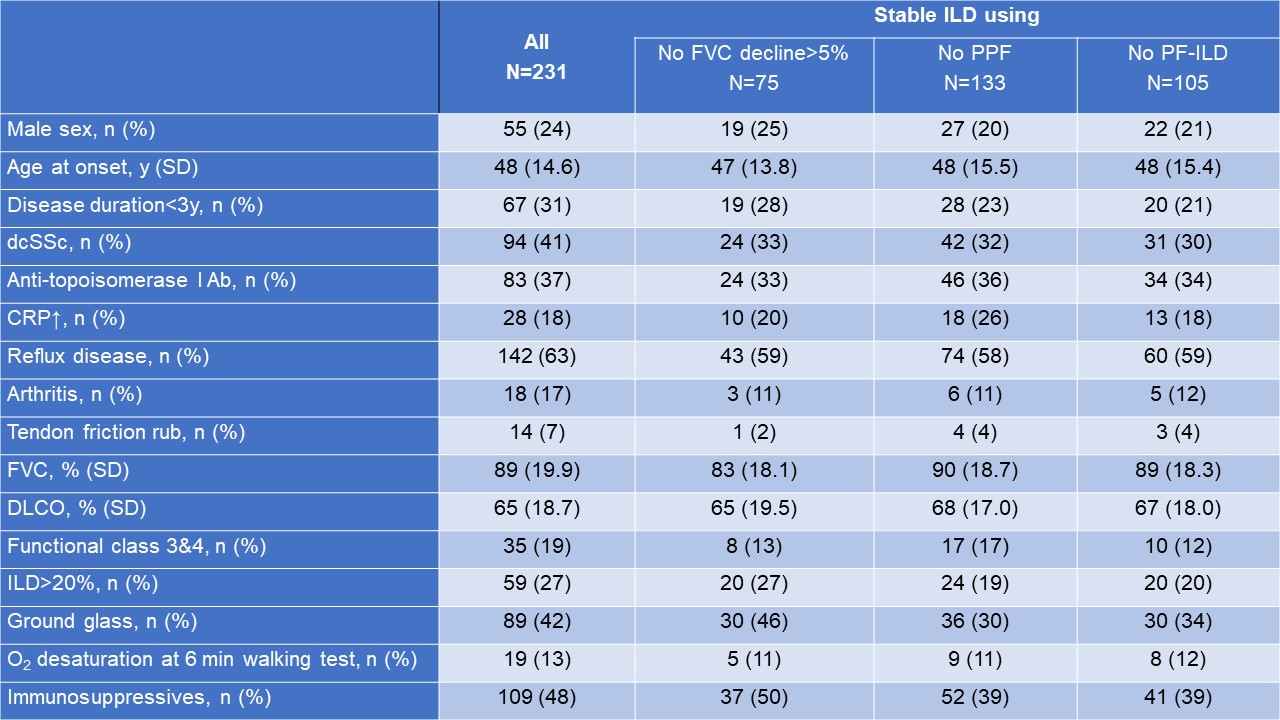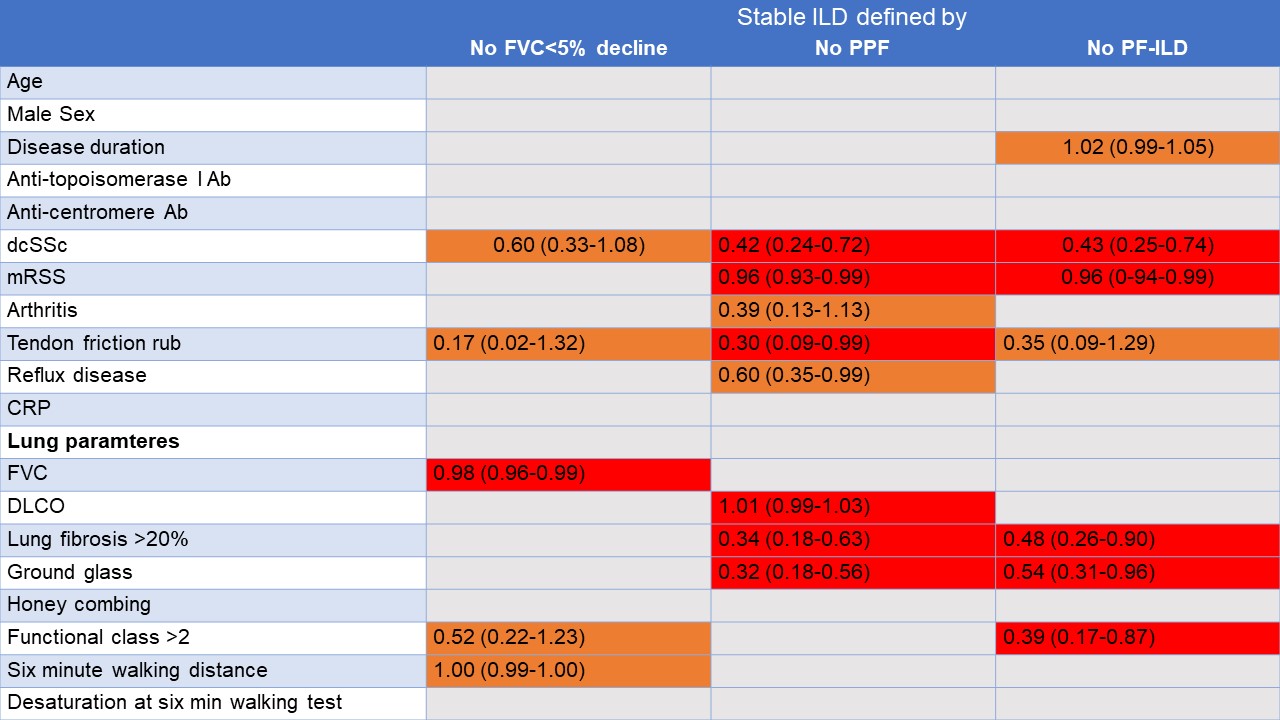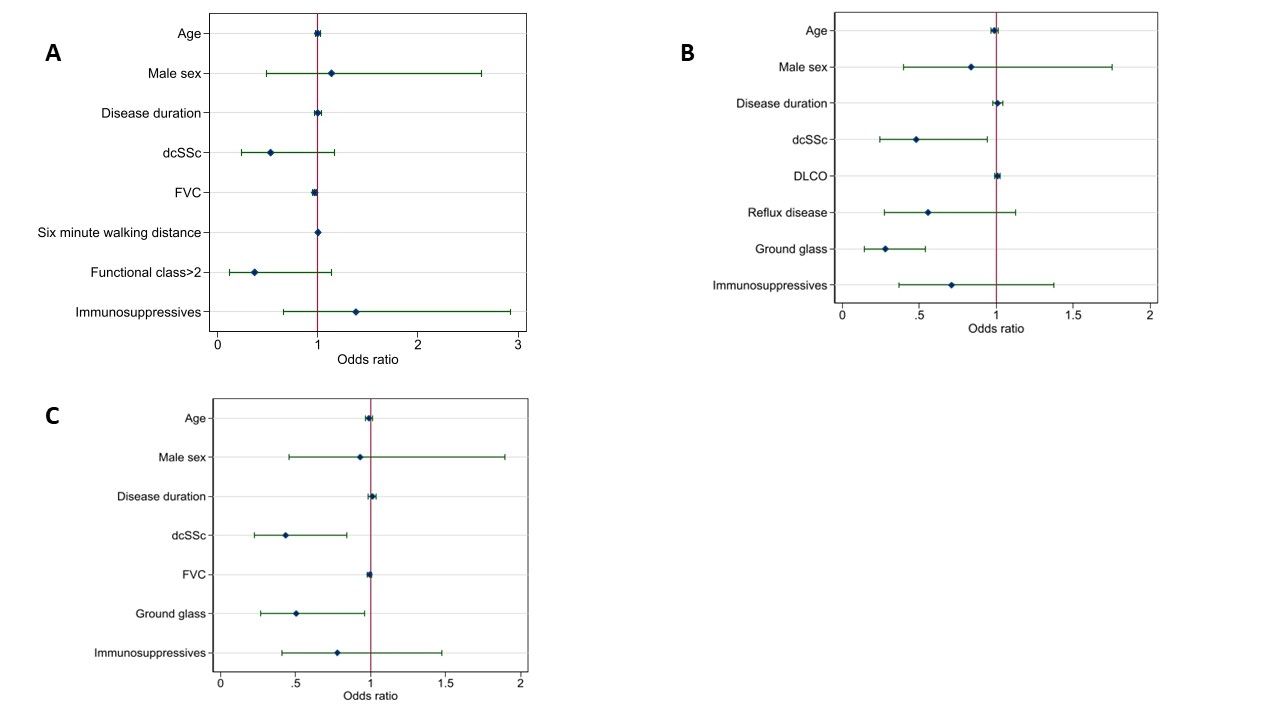Session Information
Date: Sunday, November 12, 2023
Title: (0609–0672) Systemic Sclerosis & Related Disorders – Clinical Poster I: Research
Session Type: Poster Session A
Session Time: 9:00AM-11:00AM
Background/Purpose: Progression of interstitial lung disease (ILD) reduces long-term survival in patients with systemic sclerosis (SSc), and aggressive treatment and tight monitoring should be considered. Conversely, identifying stable SSc-ILD patients over time is important in clinical practice to avoid overtreatment and facilitate inclusion into clinical trials. The objective was to determine predictive factors for stable ILD in SSc.
Methods: We included all SSc patients who had ILD on HRCT from two expert SSc centers with well characterized SSc cohorts. Consecutive annual lung function tests including forced vital capacity (FVC) and diffusing capacity for carbon monoxide (DLCO), and comprehensive serial clinical and imaging assessments were evaluated. Patients were defined as long-term stable ILD if no progression was observed over three years, using the following definitions for ILD progression:
(A) FVC decline ≥5% over 12 months
(B) 2022 ATS/ERS/JRS/ALAT guideline progressive pulmonary fibrosis (PPF) criteria with (1) worsening of respiratory symptoms; (2) absolute decline in FVC ≥5% or in DLCO≥10% and (3) disease progression on HRCT over 12 months
(C) INBUILD progressive fibrosing ILD (PF-ILD) criteria with (1) relative FVC decline ≥10%, (2) relative FVC decline ≥5-< 10% and worsening of respiratory symptoms or an increased extent of fibrosis on HRCT, or (3) worsening of respiratory symptoms and an increased extent of fibrosis within 24 months.
Multivariable logistic regression was applied, adjusting for known risk factors for ILD progression, including treatment, to identify predictors of stable ILD.
Results: In total, 231 SSc-ILD patients were included (Table 1). We identified 75 (32%) patients with stable ILD over mean three years defined by no FVC decline≥5%, 133 (58%) defined by no PPF guideline criteria and 105 (45%) by no INBUILD PF-ILD criteria. Factors predicting long-term stable ILD varied in univariable logistic regression depending on which definition was applied and no consistent factors could be identified (Table 2). Multivariable logistic regression models also varied based on the applied definition. Stable ILD as defined by no FVC >5% decline was predicted by lower baseline FVC (Figure 1A). Stable ILD defined by no PPF criteria and no PF-ILD criteria was significantly predicted by the absence of dcSSc and of ground glass opacities on HRCT (Figure 1B and C).
Conclusion: Long-term stable ILD in SSc occurs but varies based on which definition is applied. Prediction of stability is challenging, highlighting the necessity of comprehensive disease assessment and monitoring.
To cite this abstract in AMA style:
Hoffmann-Vold A, Petelytska L, Fretheim H, Aaløkken T, Becker M, Brunborg C, Bruni C, Clarenbach C, Diep P, Dobrota R, Durheim M, Elhai M, Frauenfelder T, Jordan S, Langballe E, Mihai C, Midtvedt O, Molberg O, Distler O. Prediction of Stable SSc-ILD Depends on Definition of ILD Progression [abstract]. Arthritis Rheumatol. 2023; 75 (suppl 9). https://acrabstracts.org/abstract/prediction-of-stable-ssc-ild-depends-on-definition-of-ild-progression/. Accessed .« Back to ACR Convergence 2023
ACR Meeting Abstracts - https://acrabstracts.org/abstract/prediction-of-stable-ssc-ild-depends-on-definition-of-ild-progression/



